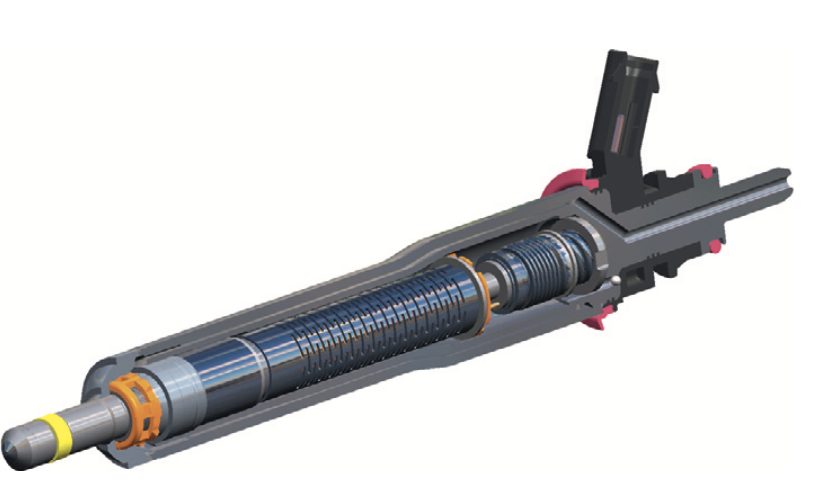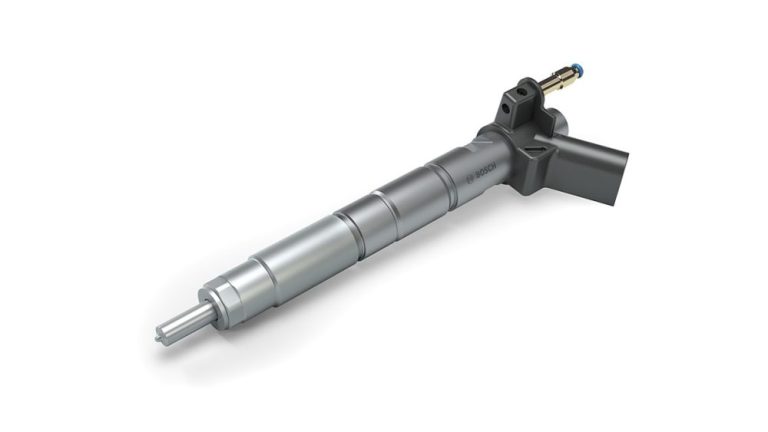A piezo common rail injector is a type of fuel injector used in diesel engines. It is a critical component of a diesel engine’s fuel system, responsible for delivering precisely measured amounts of fuel to the engine’s cylinders at the right moment. In this blog, we will discuss the working principle, advantages, and disadvantages of a piezo common rail injector.
Working Principle: A piezo common rail injector works by using a piezoelectric crystal to control the fuel injection process. Piezoelectric crystals are materials that produce an electric charge when compressed or expanded. When a voltage is applied to a piezoelectric crystal, it changes shape, producing a mechanical force. This mechanical force is used to open and close the injector’s needle valve, allowing fuel to flow into the engine’s cylinders.
Advantages of Piezo Common Rail Injector: There are several advantages of using a piezo common rail injector in diesel engines. These include:
- Faster Response Time: Piezo common rail injectors have a faster response time than traditional injectors. This means that they can deliver fuel to the engine’s cylinders more quickly, improving engine performance.
- Precise Fuel Control: Piezo common rail injectors can deliver very precise amounts of fuel to the engine’s cylinders. This allows the engine to operate more efficiently, reducing fuel consumption and emissions.
- Increased Durability: Piezo common rail injectors are more durable than traditional injectors. They have fewer moving parts, reducing the likelihood of mechanical failure.
- Quieter Operation: Piezo common rail injectors operate more quietly than traditional injectors. This is because they produce less vibration and noise during operation.
Disadvantages of Piezo Common Rail Injector: There are also some disadvantages of using a piezo common rail injector in diesel engines. These include:
- Cost: Piezo common rail injectors are more expensive than traditional injectors. This is because they require more complex electronic control systems and materials.
- Sensitivity to Contaminants: Piezo common rail injectors are more sensitive to contaminants than traditional injectors. This means that they require more frequent maintenance and cleaning to prevent clogging.
- Complexity: Piezo common rail injectors are more complex than traditional injectors. This means that they require more specialized knowledge and expertise to repair and maintain.
Conclusion: Piezo common rail injectors are a critical component of diesel engines’ fuel systems. They offer several advantages over traditional injectors, including faster response time, precise fuel control, increased durability, and quieter operation. However, they also have some disadvantages, including higher cost, sensitivity to contaminants, and greater complexity. Despite these drawbacks, piezo common rail injectors are becoming increasingly common in diesel engines due to their improved performance and efficiency.

A piezo common rail injector is a type of fuel injector that uses piezoelectric crystals to control the injection process. The injector consists of several main components, including a piezoelectric actuator, a needle valve, a fuel inlet, and an electronic control unit (ECU).
The piezoelectric actuator is a small ceramic disc that is placed between two metal plates. When an electric voltage is applied to the disc, it changes shape, producing a mechanical force. This force is used to push on the needle valve, which opens and closes the injector’s nozzle.
The fuel inlet is connected to a high-pressure fuel rail that supplies fuel to the injector at a constant pressure. The ECU monitors engine operating conditions and calculates the optimal amount of fuel to inject into the engine’s cylinders. The ECU then sends a signal to the piezoelectric actuator, telling it when to open and close the injector’s needle valve.
The piezo common rail injector’s precise fuel control allows it to inject fuel into the engine’s cylinders at very high pressures and with very precise timing. This improves engine performance and efficiency, reducing fuel consumption and emissions.
However, piezo common rail injectors are more complex than traditional injectors and require more specialized knowledge and expertise to repair and maintain. They are also more sensitive to contaminants and require more frequent cleaning to prevent clogging.
Despite these drawbacks, piezo common rail injectors are becoming increasingly common in diesel engines due to their improved performance and efficiency. As diesel engines continue to evolve and become more advanced, we can expect piezo common rail injectors to play an even more important role in the future.
Advantages:
- Faster Response Time: Piezo common rail injectors have a faster response time compared to traditional injectors. This allows them to deliver fuel to the engine’s cylinders more quickly, improving engine performance and responsiveness.
- Precise Fuel Control: Piezo common rail injectors can deliver very precise amounts of fuel to the engine’s cylinders. This allows the engine to operate more efficiently, reducing fuel consumption and emissions.
- Increased Durability: Piezo common rail injectors are more durable than traditional injectors. They have fewer moving parts, reducing the likelihood of mechanical failure.
- Quieter Operation: Piezo common rail injectors operate more quietly than traditional injectors. This is because they produce less vibration and noise during operation, resulting in a smoother and quieter ride.
Disadvantages:
- Cost: Piezo common rail injectors are more expensive than traditional injectors. This is because they require more complex electronic control systems and materials.
- Sensitivity to Contaminants: Piezo common rail injectors are more sensitive to contaminants than traditional injectors. This means that they require more frequent maintenance and cleaning to prevent clogging and damage.
- Complexity: Piezo common rail injectors are more complex than traditional injectors. This means that they require more specialized knowledge and expertise to repair and maintain.
- Vulnerability to Electrical and Electronic Issues: Piezo common rail injectors require precise electronic control to operate, and any issues with the control unit or wiring can result in injector failure. This can make diagnosing and repairing problems more challenging than with traditional injectors.
Overall, piezo common rail injectors offer significant advantages in terms of performance and efficiency, but they come at a higher cost and require more specialized maintenance and repair. However, as diesel engine technology continues to advance, piezo common rail injectors are likely to become even more important in improving engine efficiency and reducing emissions.









